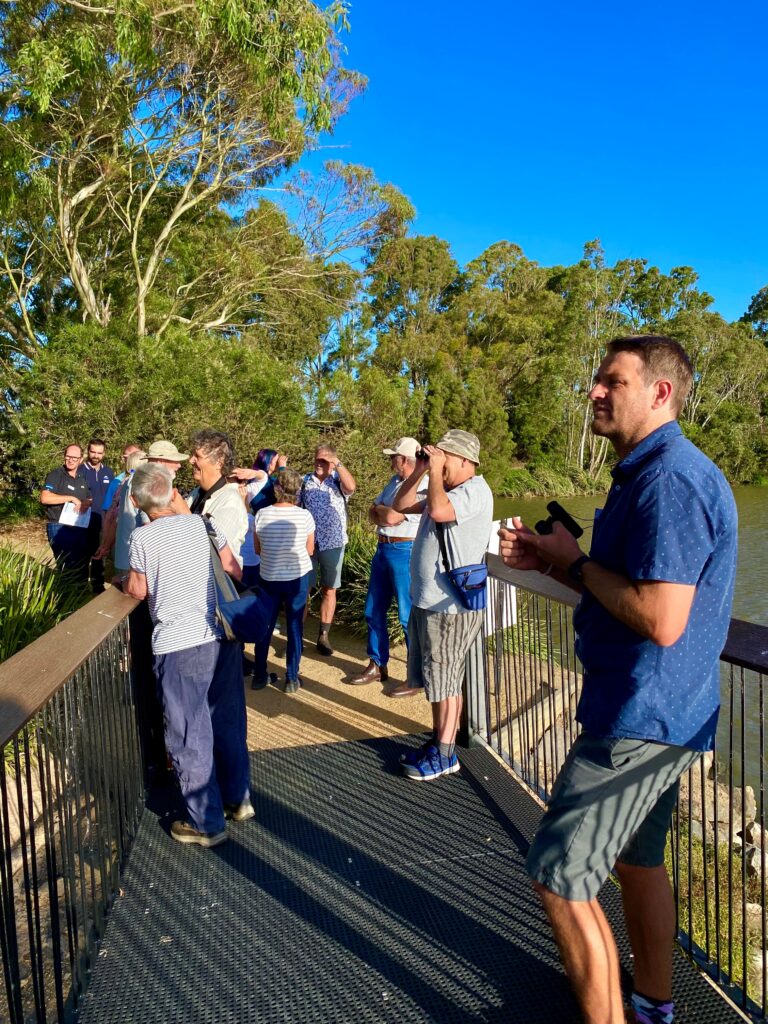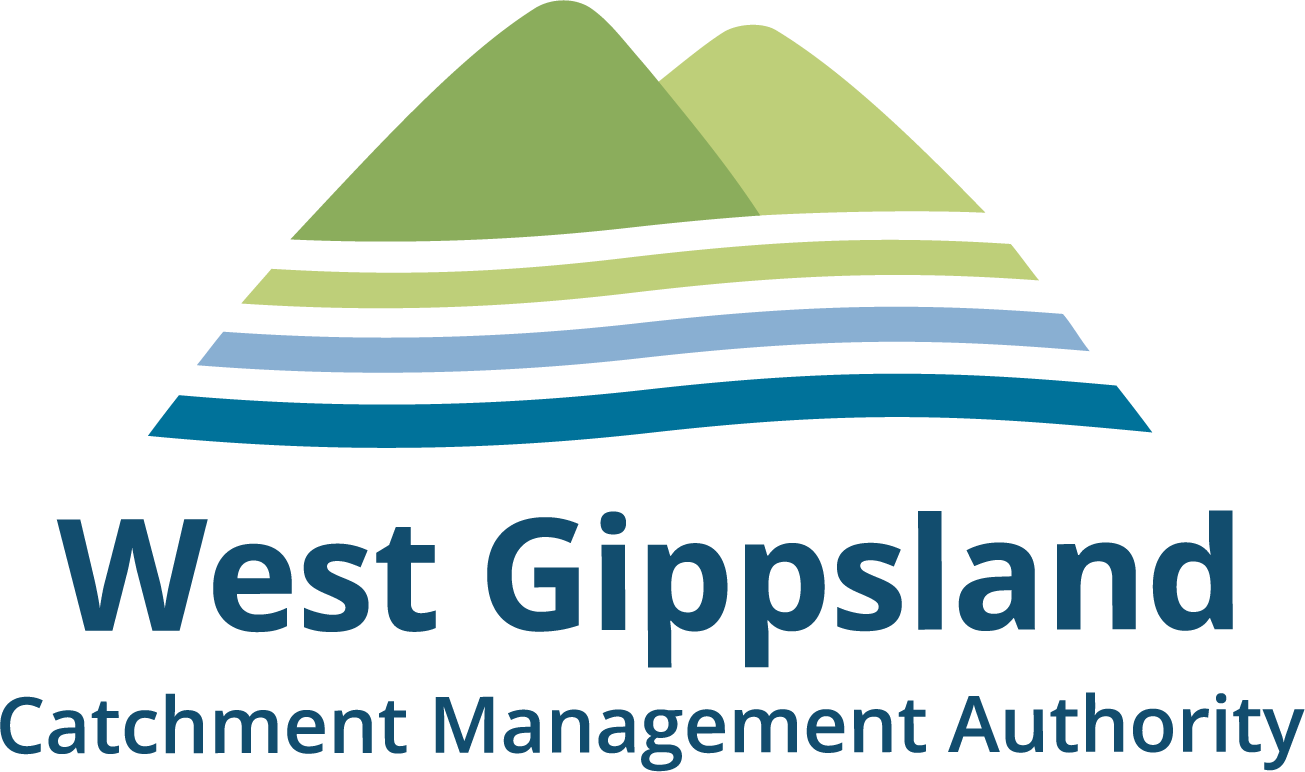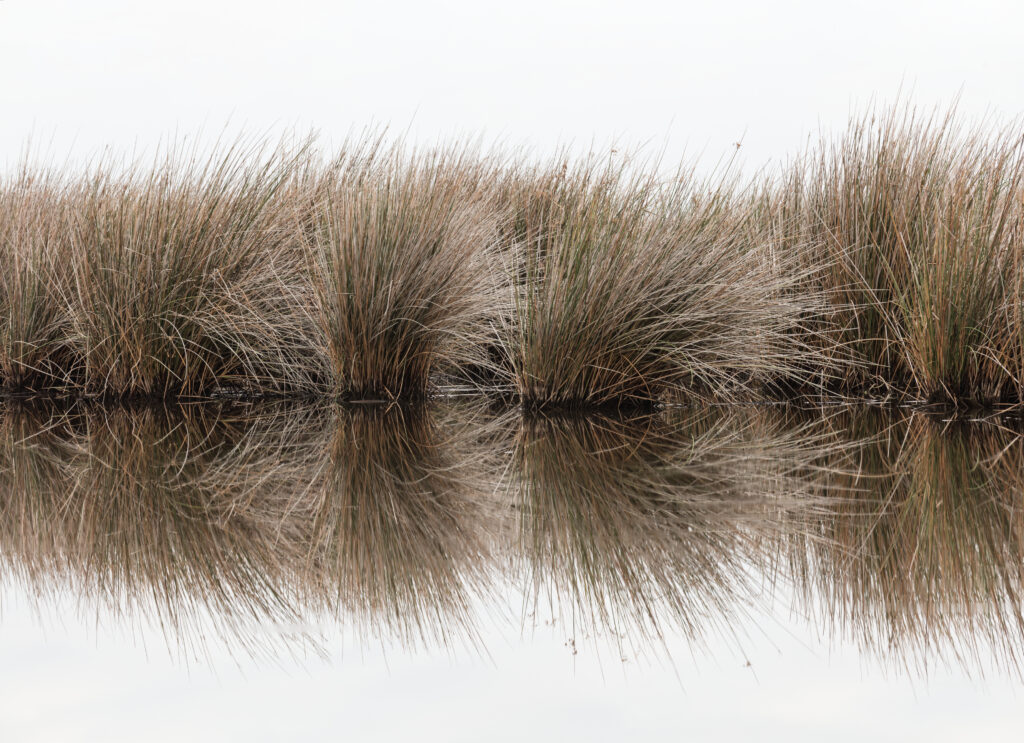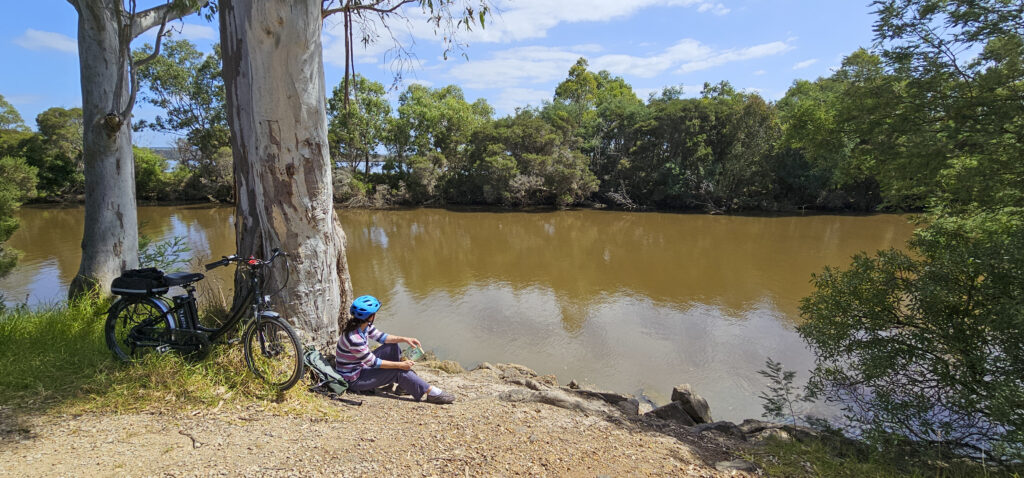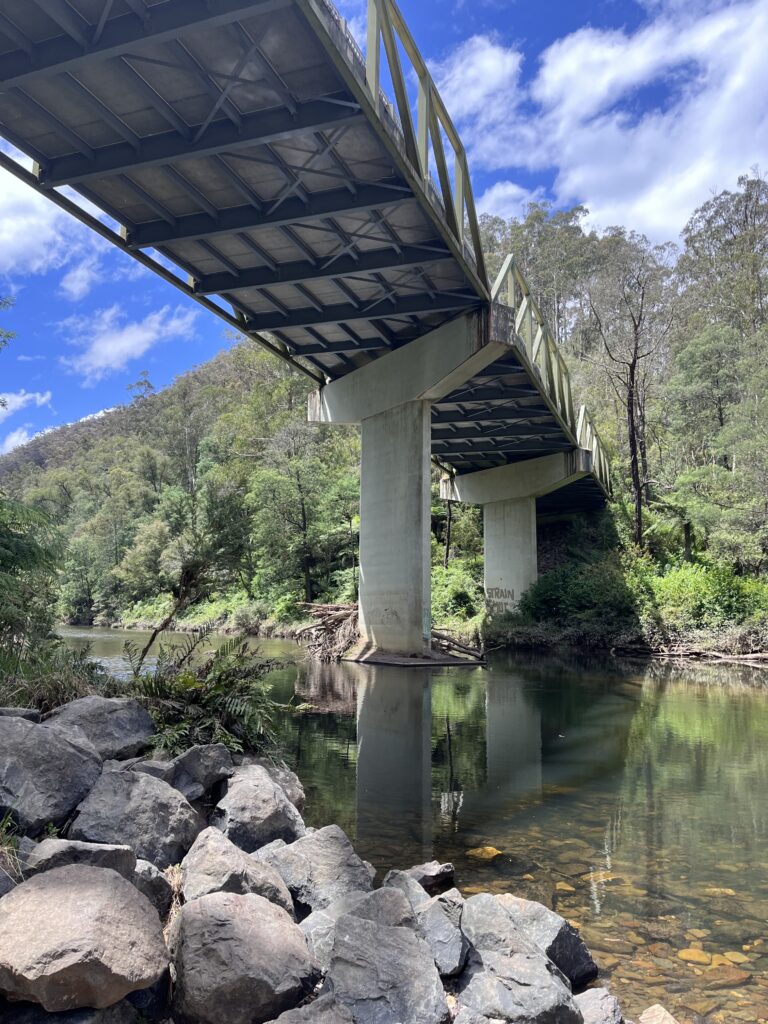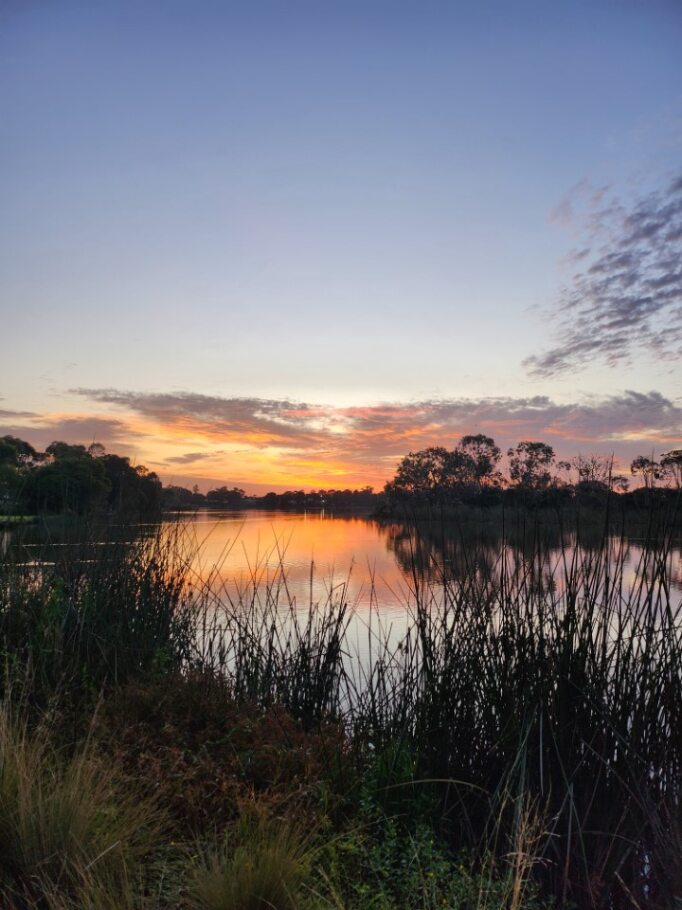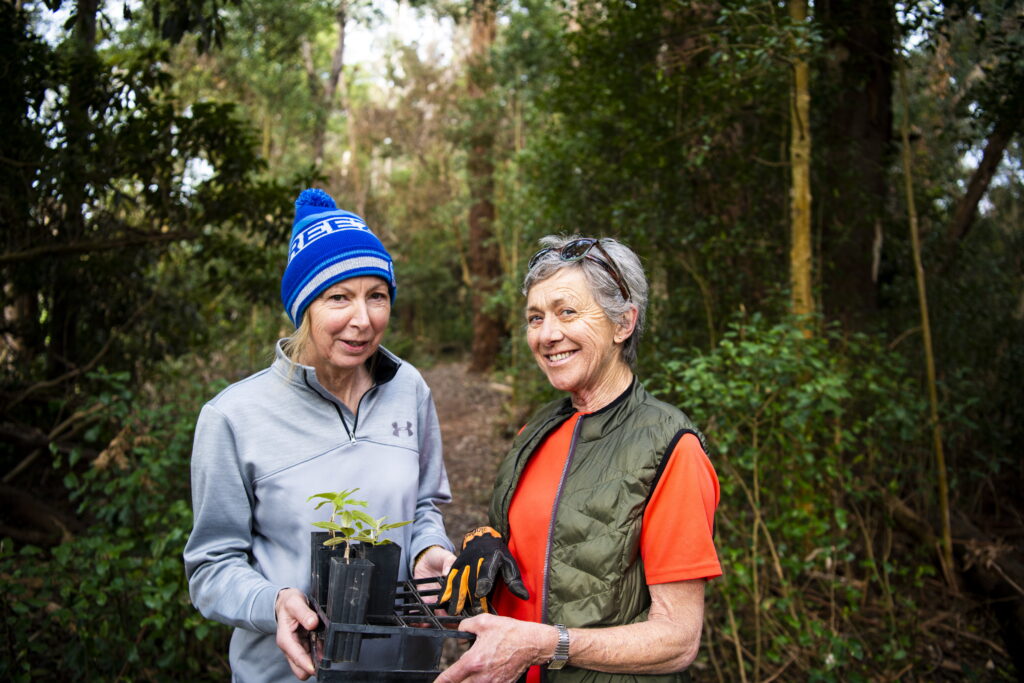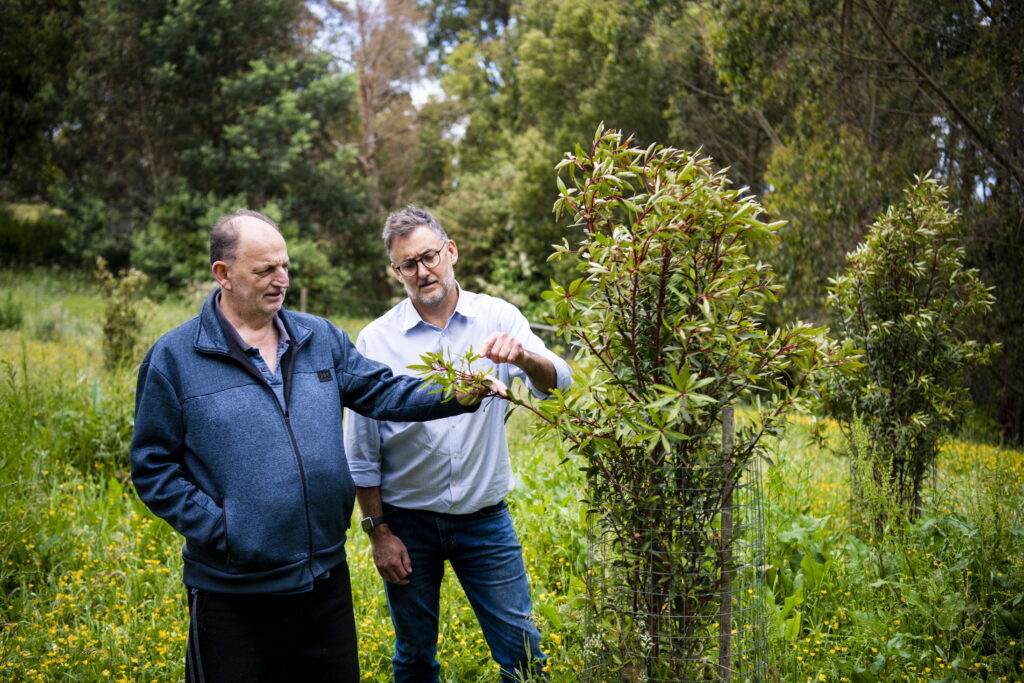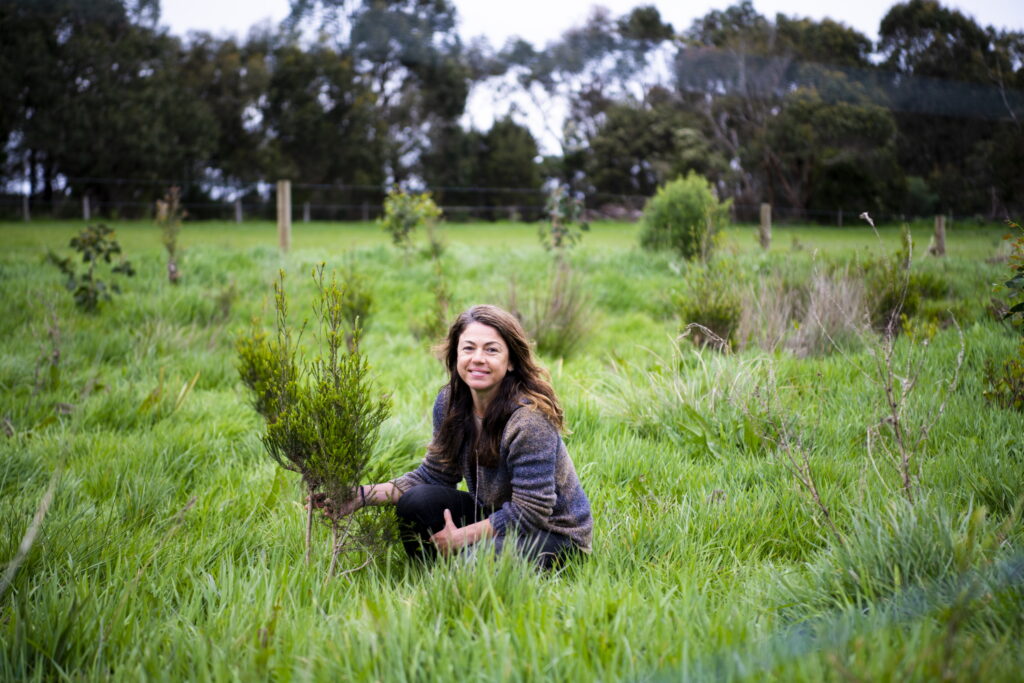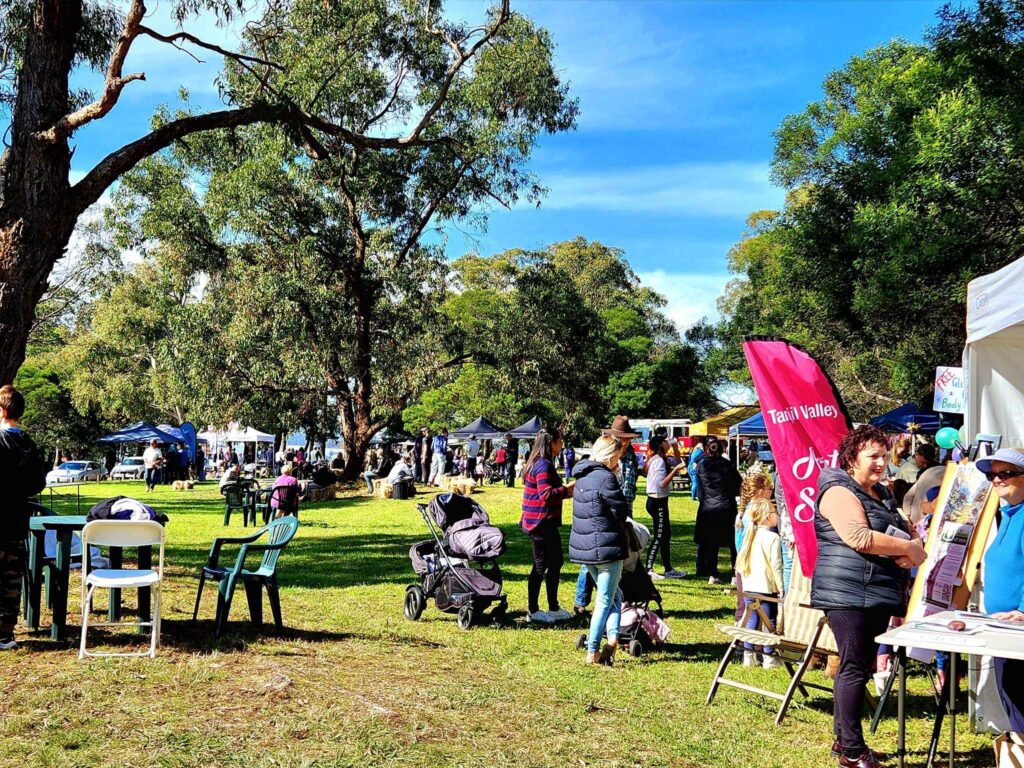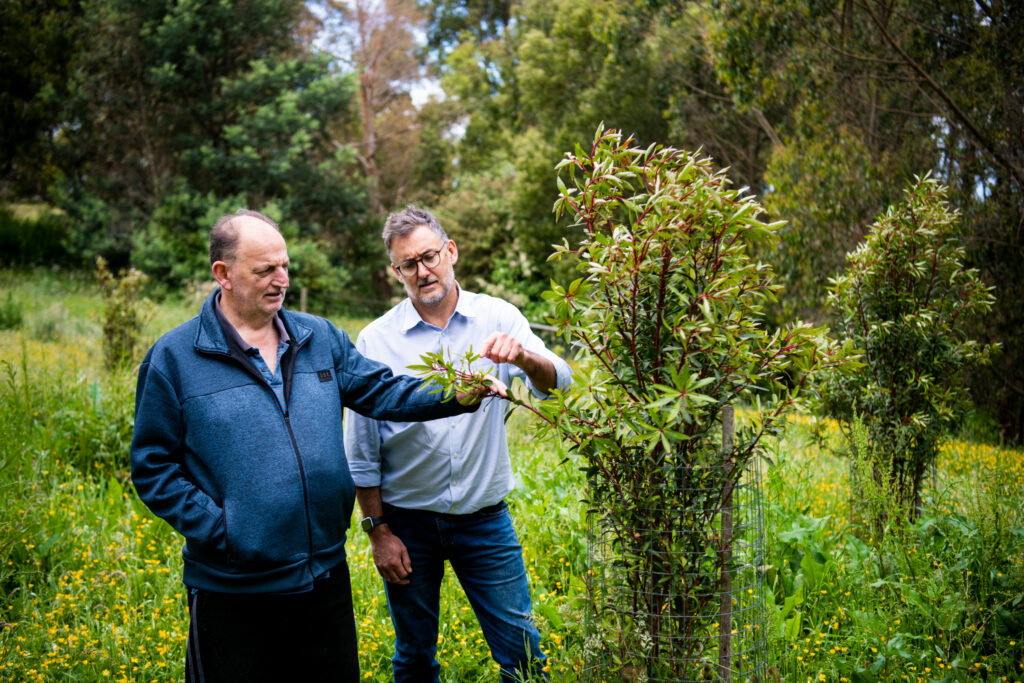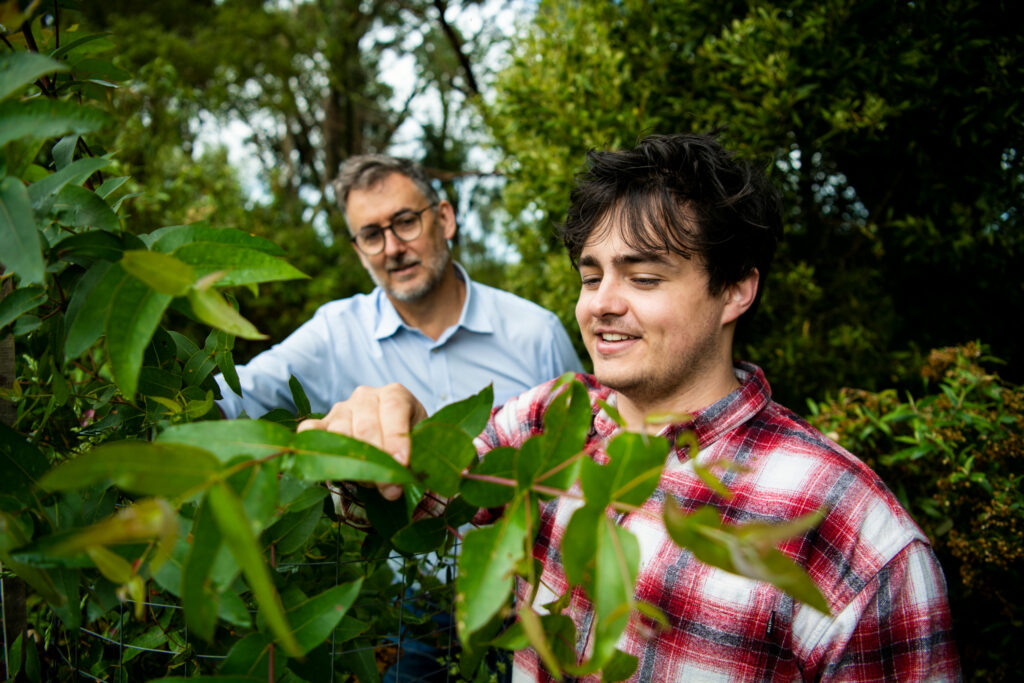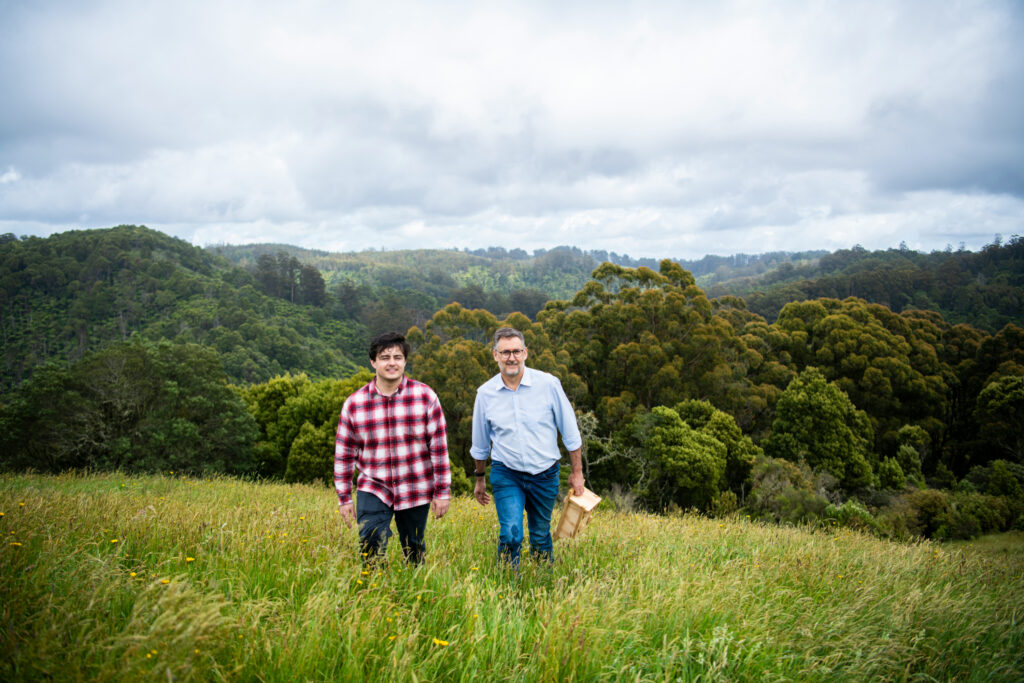Victoria’s CMA win prestigious National Banksia Award
Vic Catchments, the peak body for Victoria’s ten Catchment Management Authorities has won the Nature Positive category of the 35th National Banksia Sustainability Awards.
The Awards celebrate trailblazers in environmental and social sustainability, with winners across 14 categories spanning travel, agriculture, conservation and more announced at the gala event – all recognised as true champions of sustainability and social impact.
Cath Jenkins, Chair of Vic Catchments, accepted the award at the gala event held in Melbourne. “Vic Catchments is thrilled and humbled to be winners of this highly competitive category and congratulate all the other finalists,” said Ms Jenkins on behalf of Victoria’s ten Catchment Management Authorities (CMA).
“For over 25 years CMAs have been at the forefront of working with communities and partners to deliver incredible results for catchments across Victoria. It’s a delight that it’s been recognised by such a prestigious organisation.”
“We are a relatively small, yet passionate team and deliver projects on behalf of the Australian and Victorian governments. Partnerships are one of our biggest strengths and we share this success with everyone – Traditional Owners, partner organisations, community and government.”
“We have achieved great outcomes for our natural environments, catchments, agricultural landscapes and communities in our 26 years, and we are only just getting started.”
In 2023, across Victoria, CMAs:
- Enhanced over 3,000 hectares of vegetation to create habitat for native species
- Improved practices over 9,000 hectares of agricultural land.
- Issued 13,000 approvals and advice for works on waterways.
- Installed 368 kilometres of fencing to protect rivers and wetlands.
- Undertook 47,032 hectares of weed control.
Read about more achievements in the 2023 Vic Catchments Achievements Brochure.
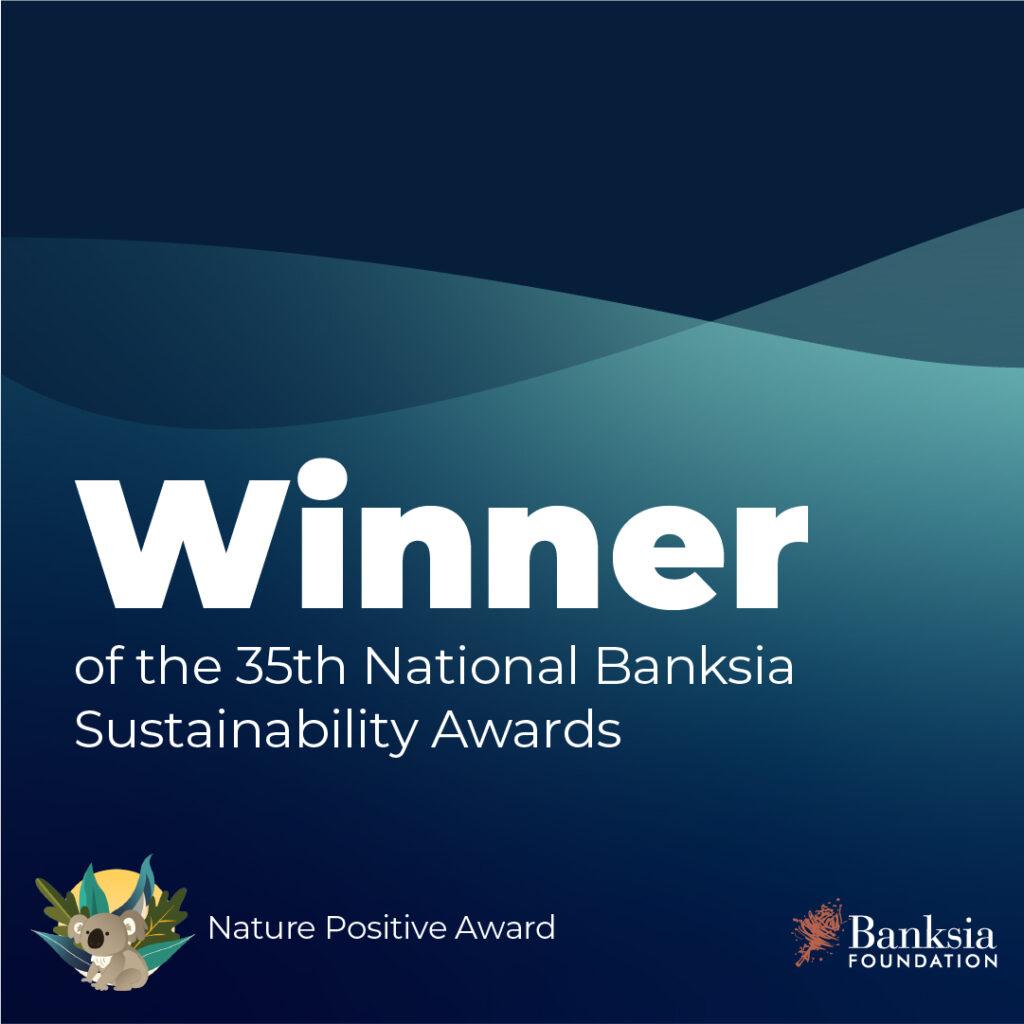
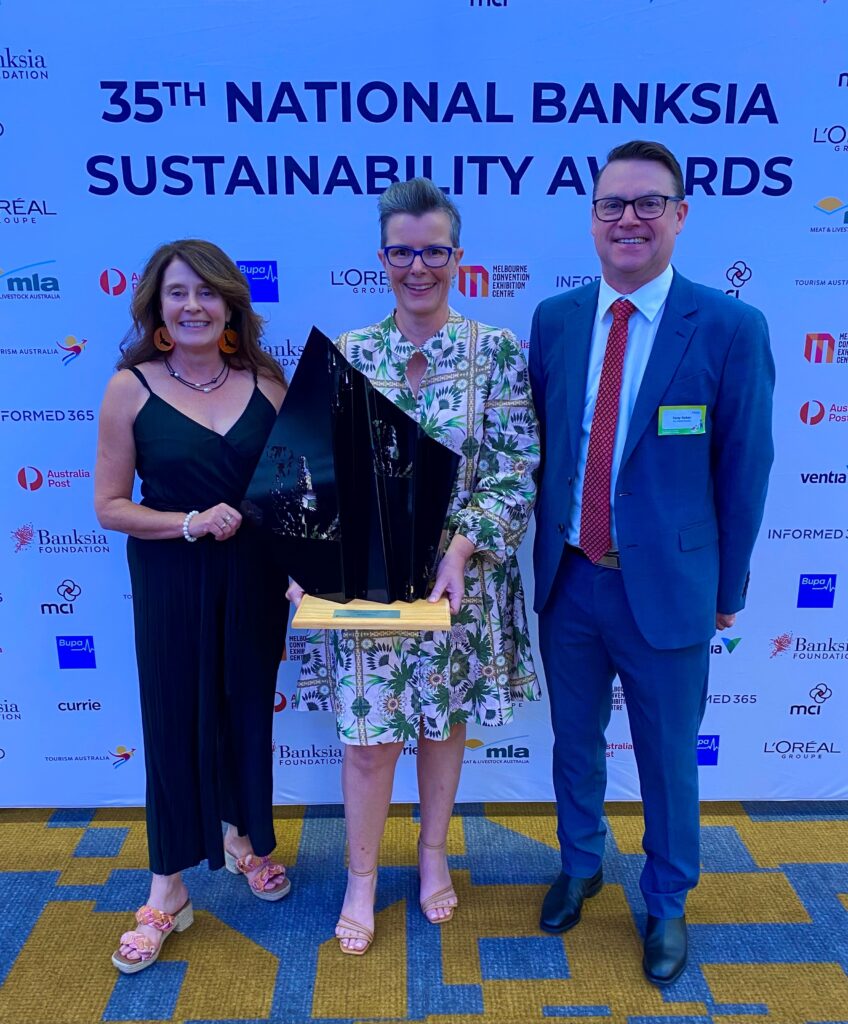
Connected rivers, connected people photo competition winners
The winners of the West Gippsland Catchment Management Authority’s ‘Connected rivers, connected people’ Waterway’s photo competition have been awarded with a photo of Heart Morass in Sale taking out the main prize.
“We would like to acknowledge the time that the community took to share their connection with Gippsland’s waterways through photos,” said CEO of West Gippsland CMA, Martin Fuller.
“Images submitted confirmed the deep connection the community has to the special waterways around the region and there were also a few unexpected stories behind the images this year.”
The photographs will form part of the West Gippsland CMA’s annual Seasonal Watering Proposal document to be submitted to the Victorian Environmental Water Holder. Once approved, the proposal is used to plan the year’s environmental water deliveries to promote and support healthy waterways and ecosystems along the:
- Durt’Yowan (Latrobe River) – including the Lower Latrobe Wetlands such as Dowd Morass, Heart Morass and Sale Common
- Wirn wirndook Yeerung (Macalister River)
- Carran Carran (Thomson River) – including Heyfield Wetlands.
“These environmental water deliveries play an essential support role in improving the health of rivers and wetlands in West Gippsland for us all to connect with and enjoy,” said Martin.
Overall winner was Damien Kook for his photo of Heart Morass. “This photo was taken in the early morning from the edge of the water, just after the morning fog had cleared. I was drawn to the scene because of the incredible, still reflection in the water,” said Damien who also noted that he had never entered a photo competition before.
Runner up was Ukraine born Iryna MacMillan for her photo ‘Reflections’ taken on the Durt’Yowan (Latrobe River). “Because we all live such hectic lifestyles, it’s good to stop and smell the flowers. Even when we are jogging or riding a bike, it’s important to take a break… stop and meditate about our life, or just simply enjoy the beautiful nature around us. Many people in Ukraine would be so jealous to have what we have here in Gippsland. We have to look after our rivers and our environment and not pollute it or destroy it,” said Iryna.
Two judge’s special mention prizes were awarded to Georgie Lambert for her photo of the Carran Carran (Thomson River) bridge and Emma O’Neill for her photo of the sunset over Lake Guthridge.
“I love taking photos of waterways, like the Thomson, as I think they are pretty and support a variety of life around them, making for a nice photo. It also sounds kind of hippy, but I think water has such a great energy, and is literally the lifeblood of earth and brings people together,” said Georgie.
“I enjoy a walk around this wetland whenever I have the opportunity to stay in Sale for work. I am always impressed by the beauty, peace and abundance of wildlife. It is such a special way to start the day connecting with nature and I always feel grounded and invigorated when I visit this magic place,” said Emma.
“Thanks to everyone who took part this year, it was wonderful to see how people responded to the theme and the important role waterways play in our lives and wellbeing,” Martin concluded.
Fresh faces for Community Engagement Network
Community representatives from across West Gippsland recently met to kick off the next three-year term of West Gippsland Catchment Management Authority’s (CMA) Community Engagement Network.
“The Community Engagement Network or CEN is where we let community members know what work we are doing and priorities we have and they, on behalf of the broader community, can provide valuable feedback on that work and other areas of community interest,” said CEO of the West Gippsland CMA, Martin Fuller.
Sixteen new and returning members representing a broad range of age, location and experience make up the network for 2024-2026. Marine science graduate Jessica Tong is one of them.
“It is amazing to be a part of an enthusiastic community group with a broad range of ages and expertise,” said Jess. “I look forward to learning more about the West Gippsland CMA and contributing to the community voice for environmental preservation.”
Returning member Dave Sutton was pleased to see a mix of equal gender representation across members. “It is wonderful to see some fresh faces to bring new ideas and perspectives to the group,” he said.
The latest cohort officially began their term with an induction session at the CMA’s Traralgon office to get to know one another and the CMA team. Cultural competence training led by Mandy Leggett, Aboriginal Cultural Heritage Officer for West Gippsland CMA, was also a feature of the day.
Addition member forums throughout the year will provide an opportunity for the group to deep dive on topics of interest such as sustainable agriculture, citizen science, Landcare in West Gippsland and works on waterways.
Executive Manager – Catchment Planning and Delivery for West Gippsland CMA, Dan Garlick, sees the CEN as an important two-way information exchange between local communities and the CMA.
“Over the years there has been incredible input from this group along with advocacy back to the community. As we move into the next round of project funding and delivery, we’ll continue having these localised conversations with CEN members to make sure we get the best outcomes for the environment and the community,” concluded Dan.
The next meeting will be in July 2023.
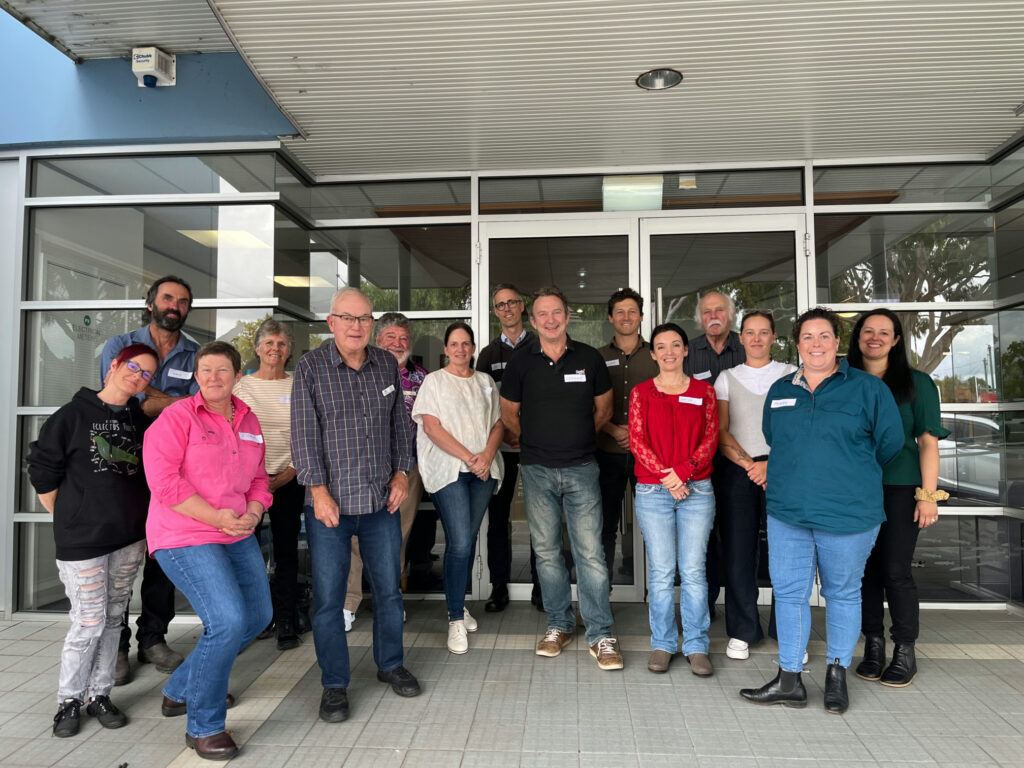
2024 Victorian Landcare Grants Open for West Gippsland
The Victorian Government is helping volunteer groups and networks protect and restore our precious environment.
Minister for Environment Steve Dimopoulos today announced the opening of the 2024 Victorian Landcare Grants, with $3.55 million available to support volunteers in caring for the state’s landscapes and biodiversity.
The grants are open to environmental volunteer groups and networks, including Landcare groups and networks, Friends groups, Conservation Management Networks, Committees of Management, Coastcare groups and Aboriginal groups.
Project grants of up to $20,000 are available for on-ground works and community education projects focused on enhancing the natural environment, including native vegetation and wildlife, waterways and soils.
Support Grants of up to $500 are available to assist with administrative and operational expenses of groups and networks.
The grants will help achieve targets set in Protecting Victoria’s Environment – Biodiversity 2037, the Victorian Government’s 20-year plan to protect our environment and native species.
“Landcare has a long and proud history in West Gippsland,” said CEO of West Gippsland CMA, Martin Fuller.
“In 2023 West Gippsland Landcare groups received funding of $365,118 for 24 projects and 37 support grants for initiatives such as Protecting Wonyip’s wonderful wildlife and Tanjil Valley Landcare Group Community Festival,”
The continued dedication to the environment of West Gippsland’s Landcare groups is inspiring. I’m really looking forward to see what projects will come out of the 2024 grant process.”
Applications for the Victorian Landcare Grants will close on 30 April 2024.
Protecting Wonyip’s wonderful wildlife
Wonyip Landcare Group was awarded a 2023 Victorian Landcare Grant for their planting project at Dingo Creek, a tributary of the Agnes River high up in South Gippsland’s Strzelecki Ranges.
The goal is to create a safe passage for native fauna to move through while also improving the overall health of the local ecosystem.
“We hope to attract a range of native species from insects, reptiles, small mammals, birds and even owls – the whole food chain. We’ll also be planting mountain grey gums to attract Strzelecki koalas, which have been seen around here,” said group member Russell Botton. Funding assisted the purchase of 500 seedlings, grown at the Yarram Yarram Landcare nursery, for volunteers to plant along the creek
Tanjil Valley Landcare Group Community Festival
Tanjil Valley Landcare Group received a 2023 Victorian Landcare Grant to hold a community festival celebrating the environment. The Tanjil Valley Community Festival in April aims to raise environmental awareness of all visitors through a range of engaging displays and activities while strengthening community ties.
Group member John Crosby said: “We will have a mixture of environmental activities and displays with local community groups providing support with food, activities and music etc. The festival will feature interactive wildlife displays, renewable energy displays, tree planting, Nature Play activities and an environmental treasure hunt. This event will raise the profile of our group and of the environment.”
A chat about estuaries on the shore of Powlett River/Kugerungmome with our Waterways Officer, Callum.
Our Waterways Officer, Callum Edwards, unlocks the language of estuaries and how we are working together to care for them. In this episode, Sally and Callum sit at the windy shore of Powlett River/Kugerungmome on Bunurong Country in South Gippsland and talk estuaries – what they are, the language around them and how we manage them.
About the podcast
About the podcast
Gippslandscapes is an occasional podcast, highlighting the many people doing great things caring for the environment and improving the landscapes of our region. Whether they are farmers, “townies” involved in Landcare, or just someone with a passion to make the region a better place.
Each episode will feature one person or group and they are available wherever you get your podcasts. All episodes are archived on Zen-cast and Apple Podcasts.
If you’d like to provide feedback to the Gippslandscapes team you can drop them an email at here or post a review on iTunes.
Autumn environmental flows now on
With the weather beginning to dry and below average rainfall forecasted for the next three months, our Environmental Water team are back to busily planning how to keep our rivers and wetlands in best condition.
A ‘low flow’ has already begun in the Macalister River and will continue until the end of June. This small lift in river volume will connect all parts of the river to help native fish to move around and to find food and shelter. This will be complemented by two autumn ‘freshes’. The April fresh will trigger the downstream migration of the Australian Grayling, towards Lake Wellington to spawn. The May fresh will trigger Tupong and Australian Bass to follow the Grayling downstream to spawn as well.
The Thomson will also receive a fresh in April, followed by a low flow through to the end of June. The fresh is intended to trigger a spawning migration for Australian Grayling and Australian Bass, with the low flow delivered to help small native fish and platypus move around the river and give them access to more food and shelter.
Flows have now commenced and will continue until the end of June. All flow details and updates are available on our water release page where you can also sign up for notifications.
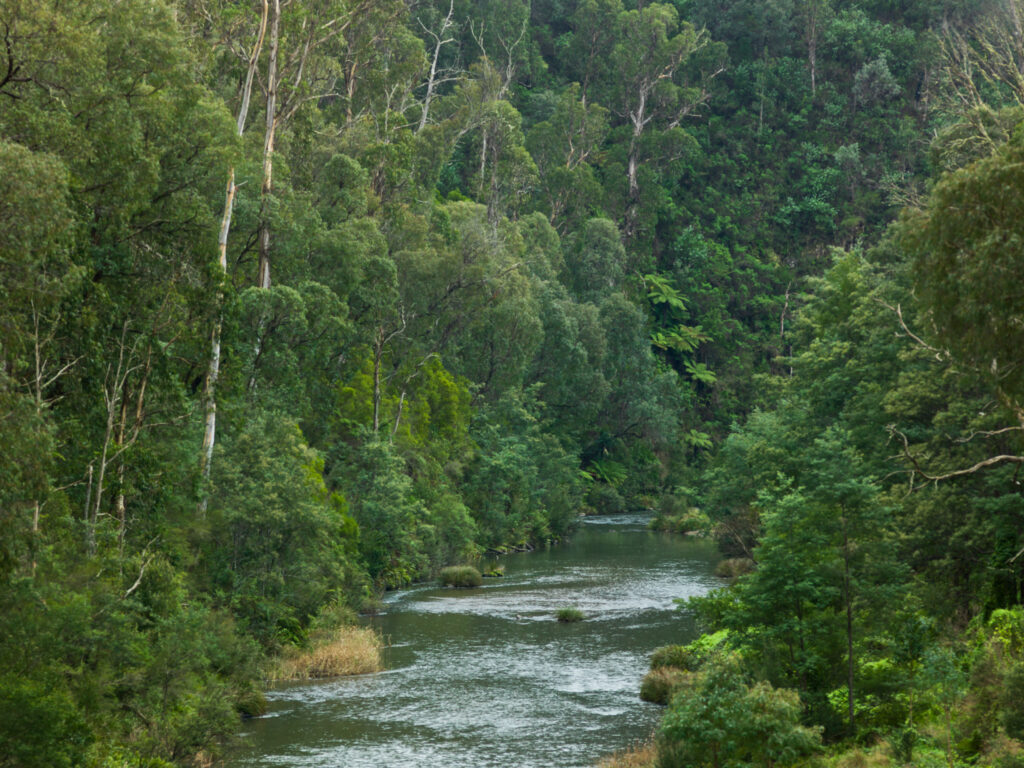
Victoria’s CMAs awarded as finalists in National Banksia Awards
Vic Catchments, the peak body for Victoria’s ten Catchment Management Authorities has been announced as a finalist in the 35th National Banksia Sustainability Awards in the Nature Positive category.
Award finalists showcase new frontiers in sustainability. Revealing the short list, Banksia Foundation CEO Graz van Egmond praised finalists for their commitment to sustainability and social impact, and for the wide range of entries.
“Across the categories this year, we have seen an incredible diversity of entries and finalists, from sole traders to large enterprises, all thinking and working creatively and effectively to combat climate change and inequity.”
“At a time when innovative solutions are desperately needed to ensure a climate resilient world, it is a joy to be able to celebrate even more Australian organisations who are contributing to building a more sustainable and equitable future for all.” Ms van Egmond said.
Vic Catchment’s submission in the newly created ‘Nature Positive’ category tells the story of how Catchment Management Authorities (CMAs) across the state have been “change makers” for waterways transforming landscapes, engaging communities and supporting Traditional Owner self determination as a priority.
“The Vic Catchments forum was established in February 2017 to showcase Victoria’s integrated catchment management framework,” said Cath Jenkins, Chair of Vic Catchments.
“Reflecting on the collective impacts over 25 years and also focusing on achievements from 2022-23, the submission demonstrates the many nature positive activities of CMAs across the state.”
“We were delighted to showcase the breadth of work only made possible through strong partnerships. We can’t do it alone, so this exciting announcement is for everyone we are lucky to work with in caring for Victoria’s catchments.”
CMAs are responsible for the integrated planning and coordination of land, water and biodiversity management in each catchment and land protection region. Each CMA is structured to maximise community involvement in decision making.
The statewide achievements are documented each year in the Statewide Achievements Brochure.
Winners will be announced at an awards presentation on 4 April 2024, at the Melbourne Convention and Exhibition Centre.
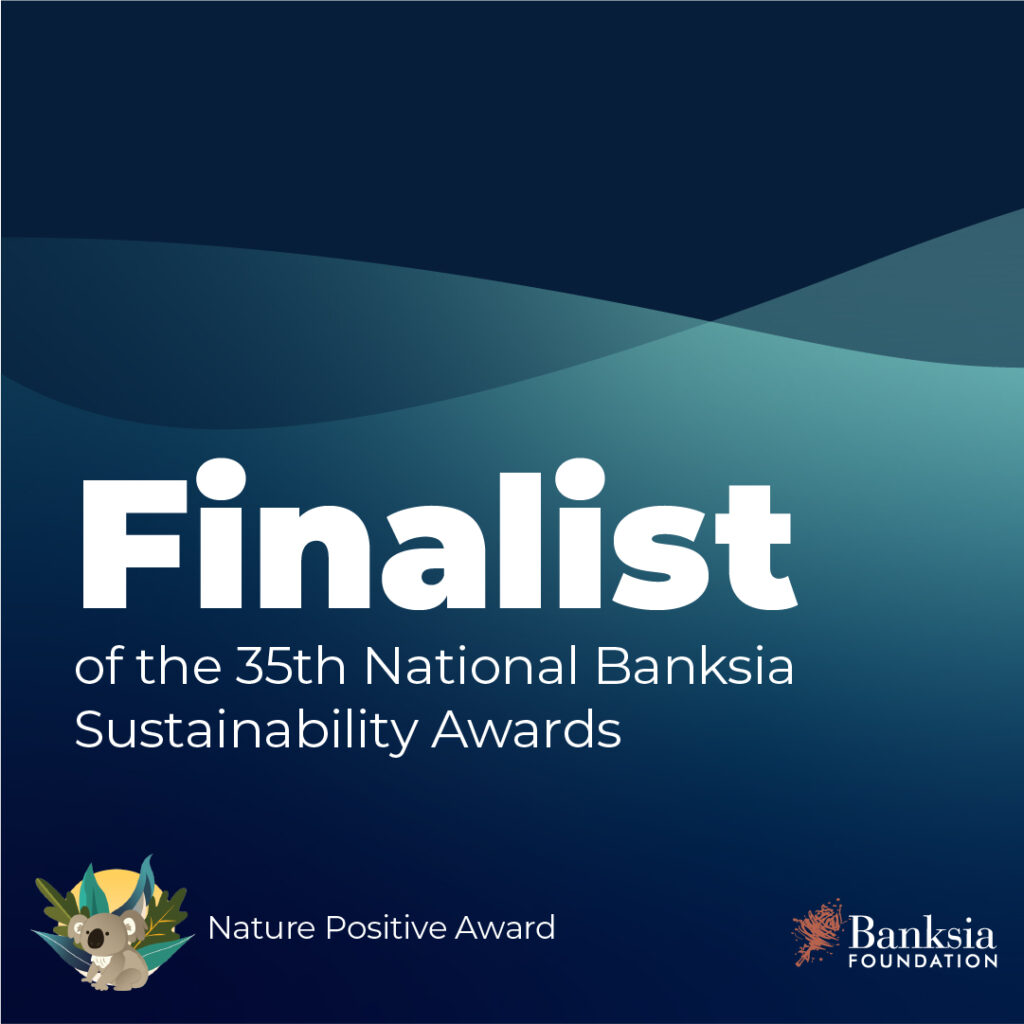

Latrobe Valley water future
If you’re confused about everything going on in the Latrobe Valley, and the implications for the Durt’Yowan (Latrobe River), you’re not alone.
From mine rehabilitation plans, to water reallocation to developing the vision for the water future for the Latrobe Valley – there’s a lot happening. Luckily West Gippsland CMA’s Strategic Lead – Latrobe, Anthony Goode (Goodie) is here to bring us up to speed as we continue our work to restore Durt’Yowan from a working river to a river that works again.
In summary:
- Public consultation on the environmental effects of the Hazelwood Rehabilitation Project will open later this year. We’ll keep you posted on your chance to have input
- 16 gigalitres of water (that’s 16 billion litres) previously reserved for future mine expansion will be reallocated to Traditional Owners, irrigators and the environment
- Organisations across Gippsland’s water sector are scoping a joint vision and plan for the water future of the Latrobe River. This is an exciting opportunity to reimagine the water future of the Latrobe for the benefit of the whole Gippsland community and environment. We’ll also keep you posted on how this partnership is progressing and how you can be involved.
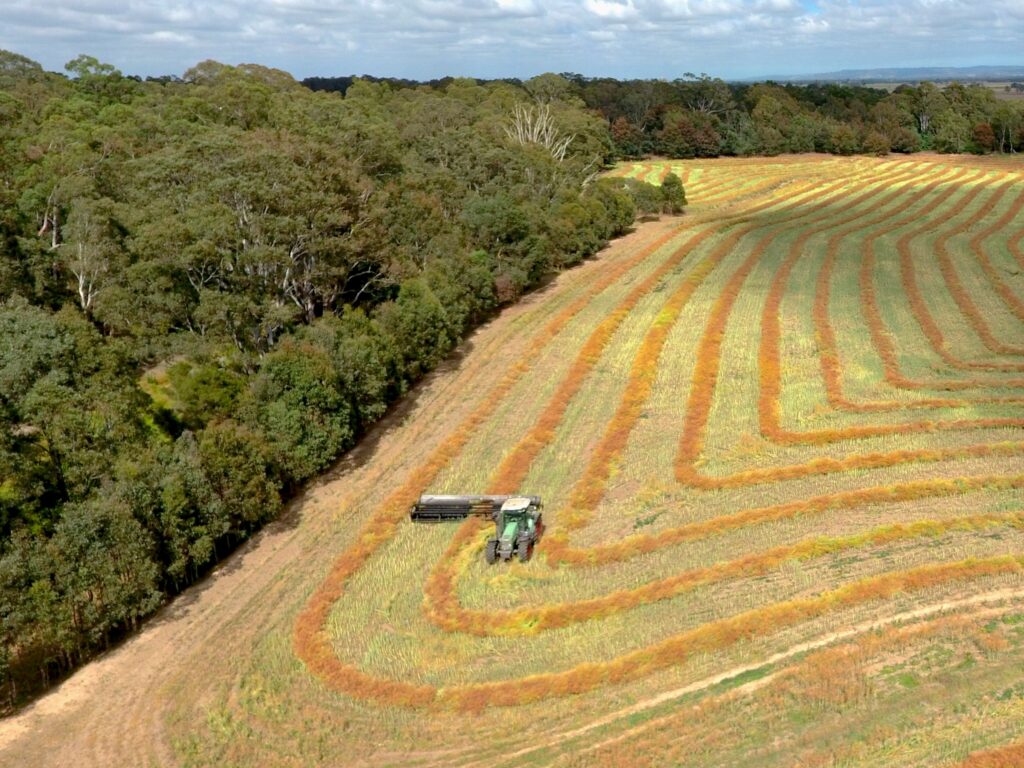
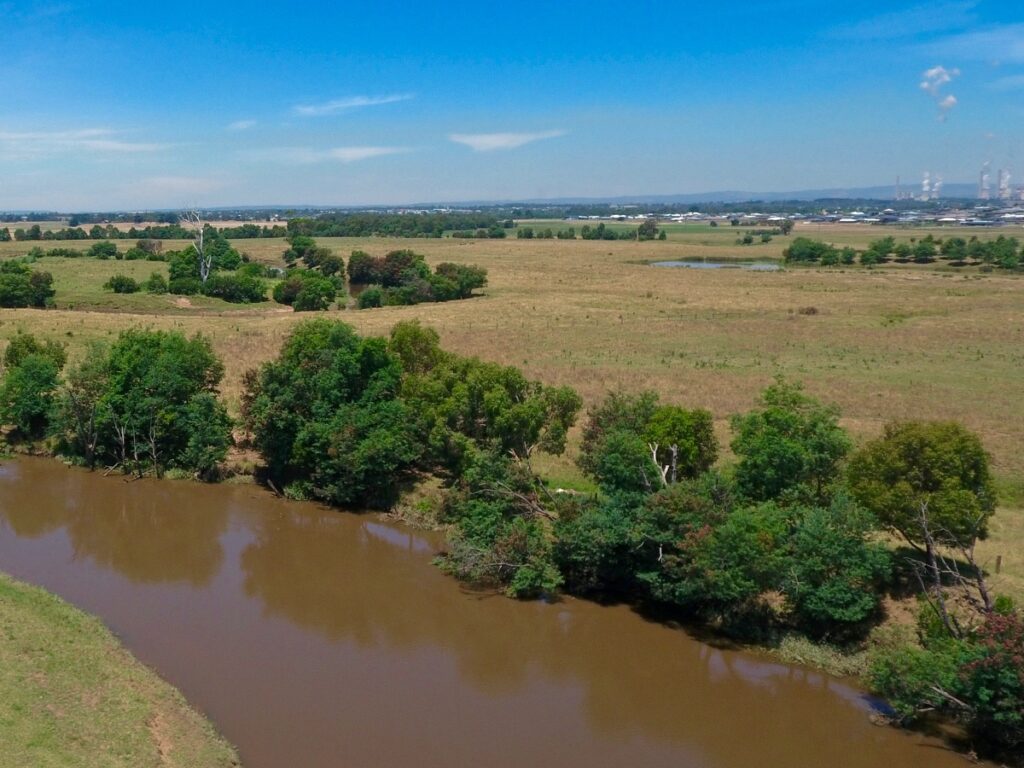
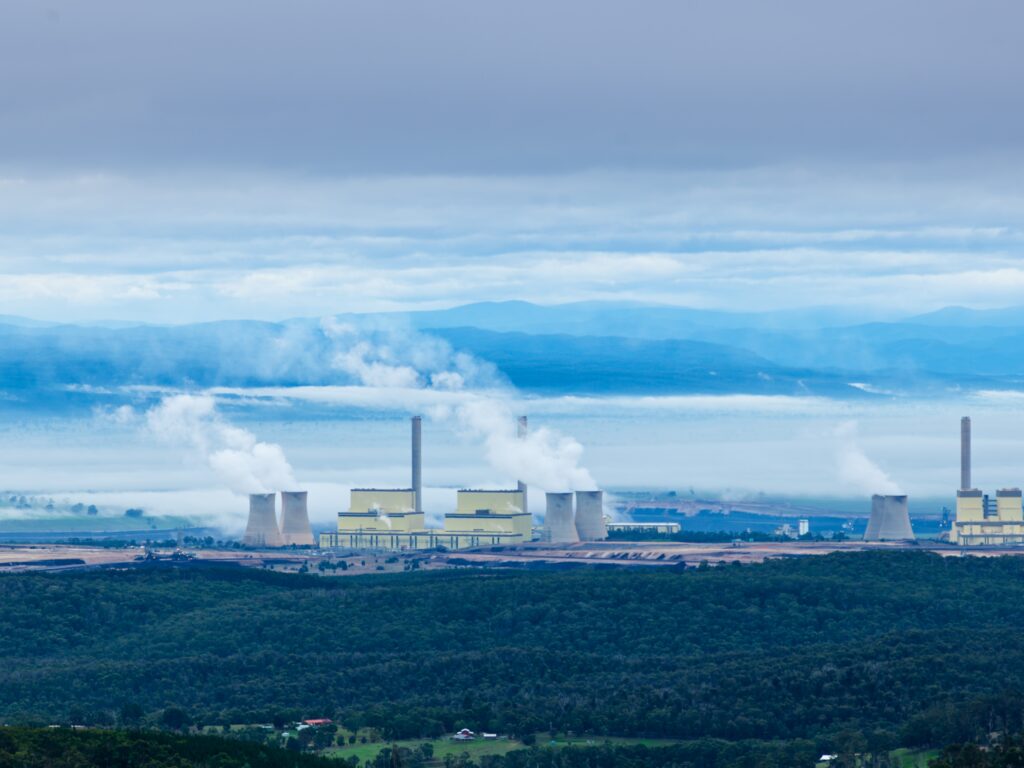
The story so far…
Mine closures
The Latrobe Valley is undergoing a significant transition with the closure of the three brown coal mines.
- Hazelwood mine has already closed and the Hazelwood Rehabilitation Project is underway. An Environment Effects Statement is being prepared and community members will have the chance to provide feedback when the public consultation phase opens later this year
- Yallourn and Loy Yang mines are due to close in 2028 and 2035 respectively.
In 2023, Department of Energy, Environment and Climate Action (DEECA) released the Latrobe Valley Regional Rehabilitation Strategy Amendment. The Amendment provides guidance to the mine operators and stakeholders regarding the process for mine closure planning. Importantly for the River, the Amendment provides guidance on the conditions under which the mine operators will be able to take water from the river for mine rehabilitation.
Challenges and opportunities
The mine closure process will present significant water resource challenges to the River system, yet it also provides new opportunities.
Central and Gippsland Region Sustainable Water Strategy (SWS). This is the Victorian Government’s guiding strategy for water resource management. The Strategy recognises the significant shortfall of water for the environment and provides policy direction to help address shortfalls over time.
An important first step in the process is the reallocation of the Loy Yang 3-4 Bench Bulk Entitlement. This is water that was reserved for future mine expansion that is no longer required. The Central and Gippsland Region SWS has committed to reallocating 16 gigalitres of the bulk entitlement, under an equitable sharing arrangement, between the Gunaikurnai Land and Waters Aboriginal Corporation (GLAWAC), irrigators (via Southern Rural Water) and the environment.
The strategy also recommended that Gippsland’s water sector collaborates on a shared vision and plan for the water future of the Latrobe involving:
- DEECA
- GLaWAC
- Gippsland Water
- Southern Rural Water
- West Gippsland CMA.
This partnership offers an exciting opportunity to reimagine the water future of the Latrobe for the benefit of the whole Gippsland community and environment.
Community input will be integral to the success of this project and engagement opportunities are expected later this year. We will keep you updated.
Playing our part for Durt’Yowan (Latrobe River)
West Gippsland CMA is working with Traditional Owners, government, community groups and partner organisations to continue the long process of restoring Durt’Yowan (Latrobe River) from a working river to a river that works again.
- Our strategy ‘Transformation of the Latrobe: Pathways for the Latrobe River System’ outlines our plans to achieve this.
- Our short film, Durt’Yowan: The Life Source, tells the story of the river and why it’s so important that we protect, restore and care for it.
Landcarers protecting Wonyip’s wonderful wildlife
Wildlife like the Strzelecki koalas are set to benefit from the planting of 500 native trees thanks to funding from the Victorian Landcare Grants.
Wonyip Landcare Group was awarded a grant in the 2023 Victorian Landcare Grants for their planting project at Dingo Creek, a tributary of the Agnes River high up in South Gippsland’s Strzelecki Ranges.
“This funding will go towards purchasing 500 seedlings, grown at the Yarram Yarram Landcare nursery, that our volunteers will plant along the creek. Importantly, it will also help pay for the sturdy wire tree guards we use to protect the young plants from deer, which are a problem around here,” said group member Russell Botton, who lives on Dingo Creek and has been involved in Wonyip Landcare Group for five years.
The goal is to create a safe passage for native fauna to move through while also improving the overall health of the local ecosystem.
“We hope to attract a range of native species from insects, reptiles, small mammals, birds and even owls – the whole food chain. We’ll also be planting mountain grey gums to attract Strzelecki koalas, which have been seen around here.”
It’s another step forward in the group’s ongoing efforts to restore native habitat and connect disparate areas of remnant old growth forest along Dingo Creek and the Agnes River.
“This project is an extension of previous work and will join up with planting we did downstream at Dingo Creek campground a few years ago,” said Russell.
It’s the next stage in a long-term project to extend the corridor 5.8km upstream, where it will eventually border Bratuaulung Forest Park.
With planning for the wildlife corridor well underway, the group aims to begin planting by early Spring. In the meantime, they’re busy undertaking a major biodiversity survey to establish baseline data of the species in the region and understand the health of their populations. In a series of events run by volunteers and experts, the group is observing and documenting information about the local flora and fauna of the region, taking surveys of fungi, birds, insects, frogs, reptiles and collecting platypus DNA.
“This valuable data will help us assess how projects like the wildlife corridor are contributing to Wonyip’s biodiversity and the protection of local species like the Strzelecki koalas.” said Russell. “It will give us ideas for future projects, too.”
The annual Victorian Landcare Grants provide funding to help Landcare and environmental volunteers protect and restore landscapes. West Gippsland Landcare groups received $365,118 for 24 projects and 37 support grants under the last funding round. The funding is underpinned by the Andrews Labor Government’s Biodiversity 2037 strategy, a record investment of $582 million since 2014 – the biggest investment into protecting biodiversity and environment in our state’s history.
The next round of Victorian Landcare Grants is expected to open in early 2024.
Community gathers to celebrate wetlands
It was a full house at Nakunbalook Environmental and Cultural Education Centre last Friday to celebrate World Wetlands Day with the community.
We heard from partners working to protect the world renowned Gippsland Lakes Ramsar wetlands and took a stroll to check out the birds, frogs and Flying Foxes.
Dr Adrian Clements from West Gippsland CMA kicked off the evening sharing the history and current management of the Lower Latrobe wetlands including the role of delivering environmental water into the system.
Kim Allan and Kerry Spencer from East Gippsland CMA talked about the Gippsland Lakes Ramsar Site. Jack Winterbottom from BirdLife East Gippsland inspired everyone about the incredible array and lives of wetland birds both resident and migratory and also gave an update on White-bellied Sea Eagles. Sharon Ray provided fun for kids and a walk to the Flying Fox colony.
World Wetlands Day, is celebrated annually on 2 February, and aims to raise global awareness about the vital role of wetlands.
We’ll keep working together to protect wetlands every day of the year. Find out more and keep up to date on the wetland projects we have on the go.
Thanks to event partners:
